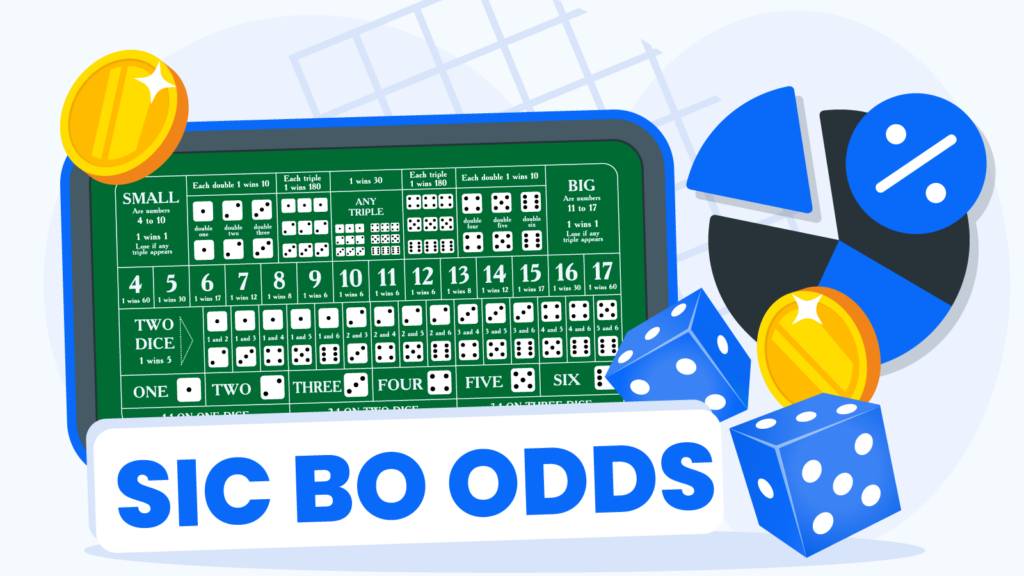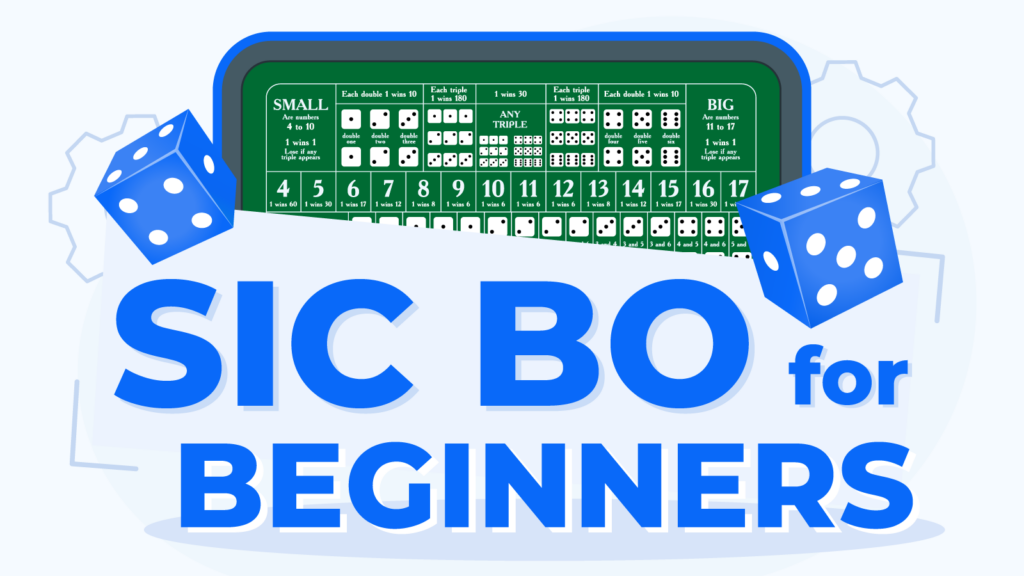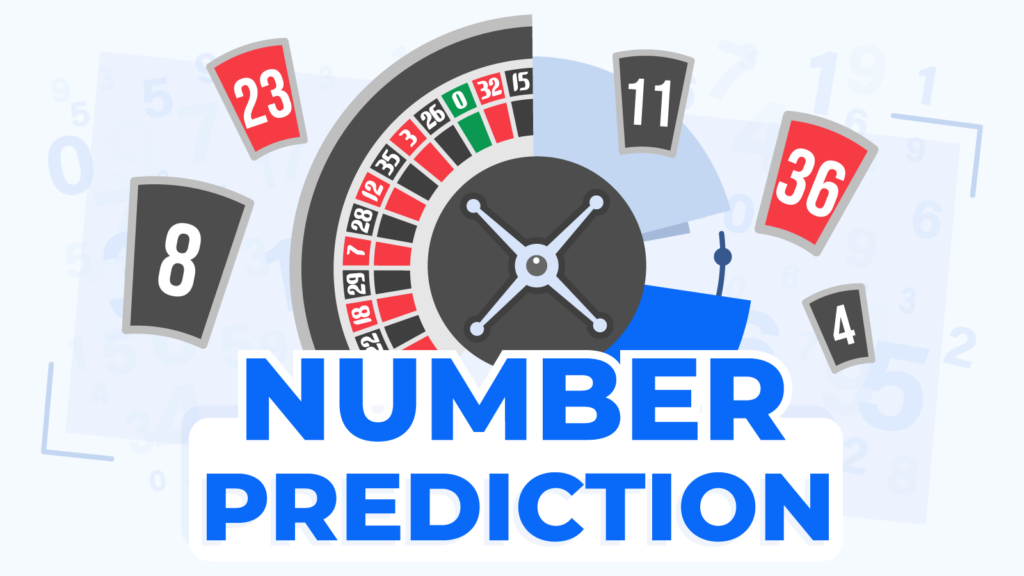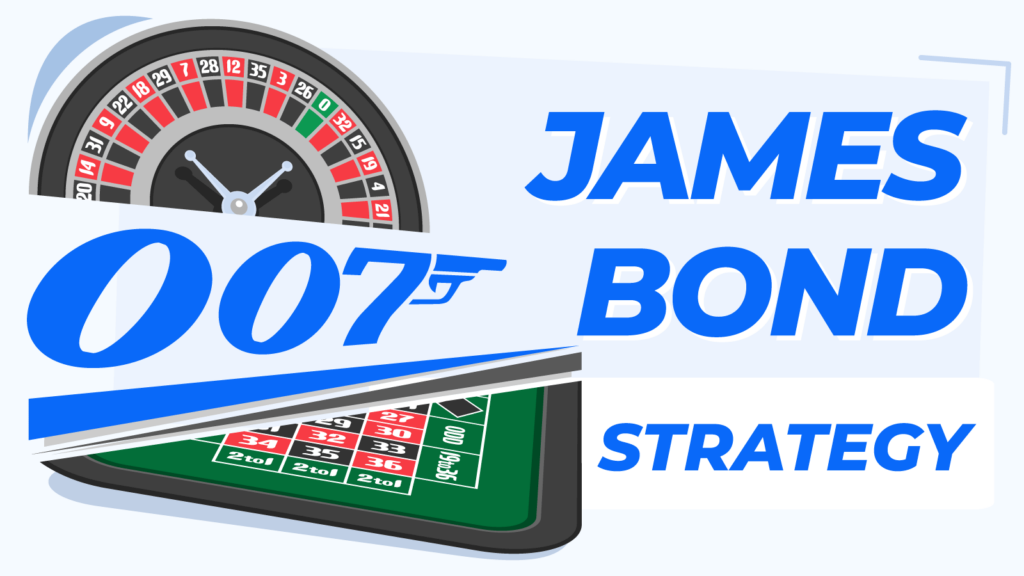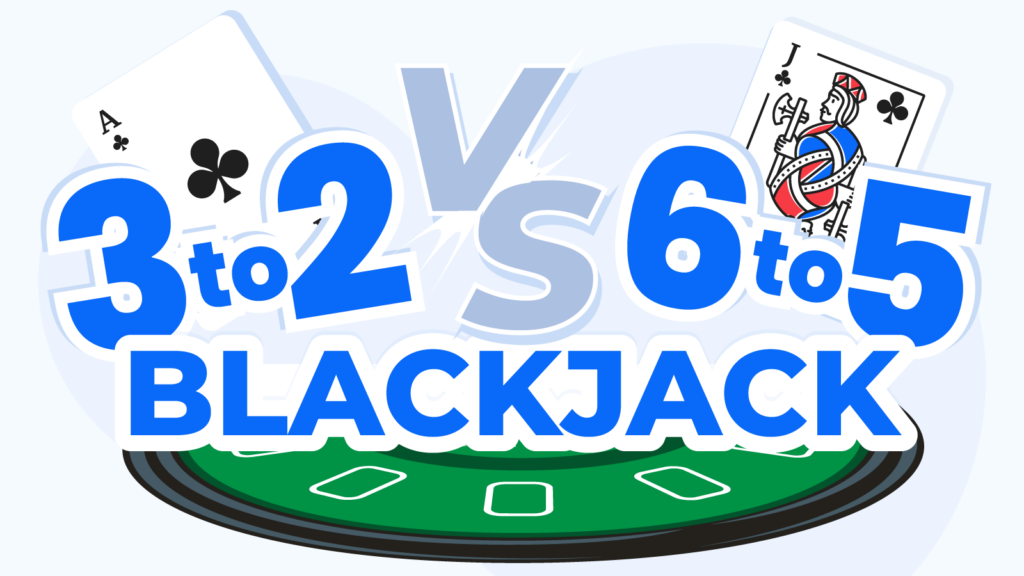
What Casinos Don’t Want You To Know | 3:2 Vs 6:5 Blackjack
All the information in this page was checked by:
All the information we present is verified by our team of casino reviewers using multiple sources. We commit to a high level of accuracy and reliability.
We have paid partnerships with the online casino operators featured on our site. We also earn commissions when you, the user, click on certain casino links. These financial partnerships do not affect our reviews, recommendations, or analysis. We remain committed to delivering unbiased gambling reviews. For more details, visit our Advertiser Disclosure page.
3:2 Blackjack offers higher payouts and superior overall odds compared to 6:5 Blackjack. Our expert discusses these aspects in detail while explaining how you can tilt blackjack odds in your favour. Read on to learn how to distinguish between different blackjack variants and analyse the impact of house edge discrepancies while identifying top online casinos for 3:2 Blackjack players.
- Why 3:2 Blackjack is the Best Option for Players
- Blackjack Rules For 3:2 vs 6:5 – House Edge & Payout Odds
- How to Effectively Use 3:2 Blackjack Odds in Your Favour
- Why Online Casinos Love 6:5 Blackjack | About the Payouts
- Alpha’s Closing Thoughts – Why 3:2 Blackjack is the Best
Understanding All Blackjack Payout Structures
Before diving into the 3:2 vs 6:5 comparison, it’s essential to understand how blackjack payout rules work and why they matter so much to your bottom line.
Standard 3:2 Blackjack Payouts Explained
The 3:2 payout has been the gold standard in blackjack since the game’s inception. Here’s what it means:
How 3:2 Works:
- For every £2 you wager, you win £3 when you hit blackjack
- A £10 bet pays £15
- A £20 bet pays £30
- A £100 bet pays £150
Why 3:2 is Standard:
The 3:2 payout ratio is a thing because blackjack occurs approximately once every 21 hands. It’s a fitting structure that balances the game’s mathematics and gives players a fair chance while maintaining a small house edge of around 0.5% when using basic blackjack strategy.
Mathematical Foundation
| Bet Amount | 3:2 Payout | Calculation | Total Return |
|---|---|---|---|
| £5 | £7.50 | (£5 ÷ 2) × 3 | £12.50 |
| £10 | £15.00 | (£10 ÷ 2) × 3 | £25.00 |
| £25 | £37.50 | (£25 ÷ 2) × 3 | £62.50 |
| £50 | £75.00 | (£50 ÷ 2) × 3 | £125.00 |
| £100 | £150.00 | (£100 ÷ 2) × 3 | £250.00 |
You can also think of 3:2 as 1.5:1, meaning you win 1.5 times your original bet. This makes mental calculations easier:
- £10 × 1.5 = £15 payout
- £20 × 1.5 = £30 payout
Expert Tip: Experts believe the 3:2 payout is what makes blackjack such a beloved game at online casinos. Deviations in any direction from this standard have been shown to tilt the odds in the house’s favour.
6:5 Blackjack Payouts: The Casino’s Advantage
This is a newer payout structure that casino operators pushed at the start of the century while looking to increase profits without changing much about the already-established game.
How 6:5 Works:
- For every £5 you wager, you win £6 when you hit blackjack
- A £10 bet pays £12 (not £15)
- A £20 bet pays £24 (not £30)
- A £100 bet pays £120 (not £150)
The Hidden Cost
| Bet Amount | 6:5 Payout | 3:2 Payout | You Lose |
|---|---|---|---|
| £5 | £6.00 | £7.50 | £1.50 |
| £10 | £12.00 | £15.00 | £3.00 |
| £25 | £30.00 | £37.50 | £7.50 |
| £50 | £60.00 | £75.00 | £15.00 |
| £100 | £120.00 | £150.00 | £30.00 |
| £500 | £600.00 | £750.00 | £150.00 |
6:5 has often been expressed as 1.2:1 by more experienced players, and aptly so since you win only 1.2 times your bet instead of 1.5 times.
The Rounding Problem
One often-overlooked issue with 6:5 payouts is that they create rounding problems with odd bet amounts:
| Bet Amount | Exact 6:5 Payout | What Casinos Pay | Additional Loss |
|---|---|---|---|
| £3 | £3.60 | £3.00 | £0.60 |
| £7 | £8.40 | £8.00 | £0.40 |
| £12 | £14.40 | £14.00 | £0.40 |
| £13 | £15.60 | £15.00 | £0.60 |
Recommendation: Avoid additional rounding losses by always betting in multiples of £5 at 6:5 tables.
Other Payout Variations You Might Encounter
3:2 and 6:5 are by far the most common payout structures, but others exist:
- 2:1 Blackjack (Rare but Excellent): This one pays £2 for every £1 wagered, meaning a £10 bet will fetch you £20. The reason is rare is that it creates a negative house edge of -1.857%.
- 1:1 Blackjack (Avoid at All Costs): With this every £1 will pay £1, which explains why it is also called Even Money Blackjack. So why avoid it? Well, because it has a pretty unfavourable house edge of 2.679%.
- 7:5 Blackjack (Uncommon): 7:5 pays £7 for every £5 wagered and comes with a house edge of 0.9%, which makes it no match for 3:2 but certainly better than 6:5.
Payout Comparison Table
| Payout Ratio | Alternative Expression | £10 Bet Pays | House Edge | Verdict |
|---|---|---|---|---|
| 2:1 | 2.0:1 | £20 | -1.857% | Excellent (rare) |
| 3:2 | 1.5:1 | £15 | 0.411% | Standard (best) |
| 7:5 | 1.4:1 | £14 | 0.900% | Acceptable |
| 6:5 | 1.2:1 | £12 | 1.770% | Poor (avoid) |
| 1:1 | 1.0:1 | £10 | 2.679% | Terrible (never play) |
Why 3:2 Blackjack is the Best Option for Players
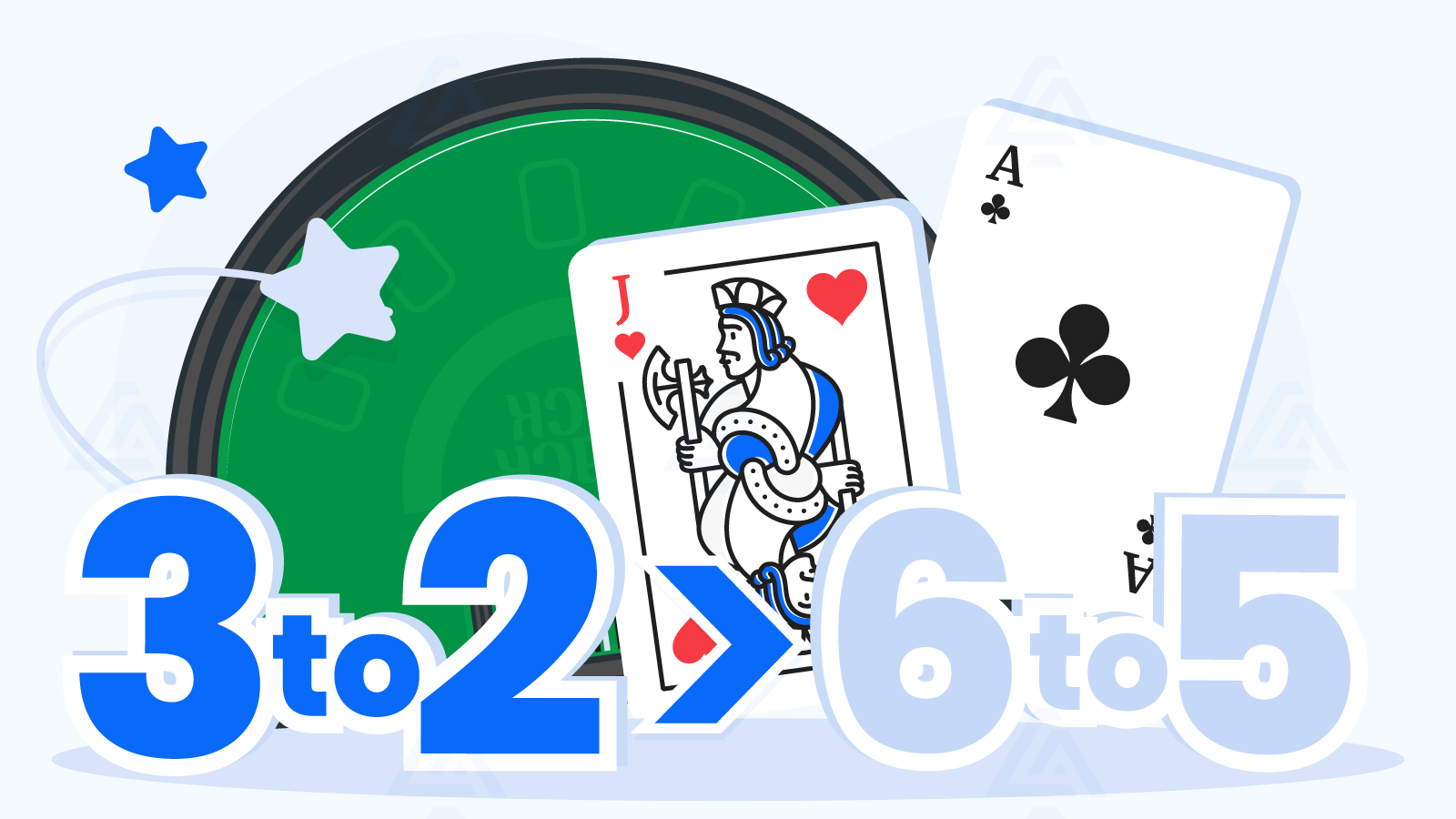
What applies to both
- Learn the Blackjack’s odds and basic strategy charts to increase your chances; these will apply to both types
- Read UK casino reviews before registering with any platform; pay extra attention to the table game titles featured on it
- Always check for welcome bonuses and if playing table games with these promotional funds is possible
- Pay attention to other rules that can give you an edge – the number of decks in play is essential; hence, learn about Double Deck Blackjack.
- Blackjack insurance bets are generally useless, giving you no advantage; learn why and try to avoid it
- Try to learn betting systems like the Blackjack Martingale strategy; use them only once you understand their limitations
- Control your betting and keep playing responsibly and consciously; the most important game is played beyond the felt table
Blackjack Rules For 3:2 vs 6:5 – House Edge & Payout Odds
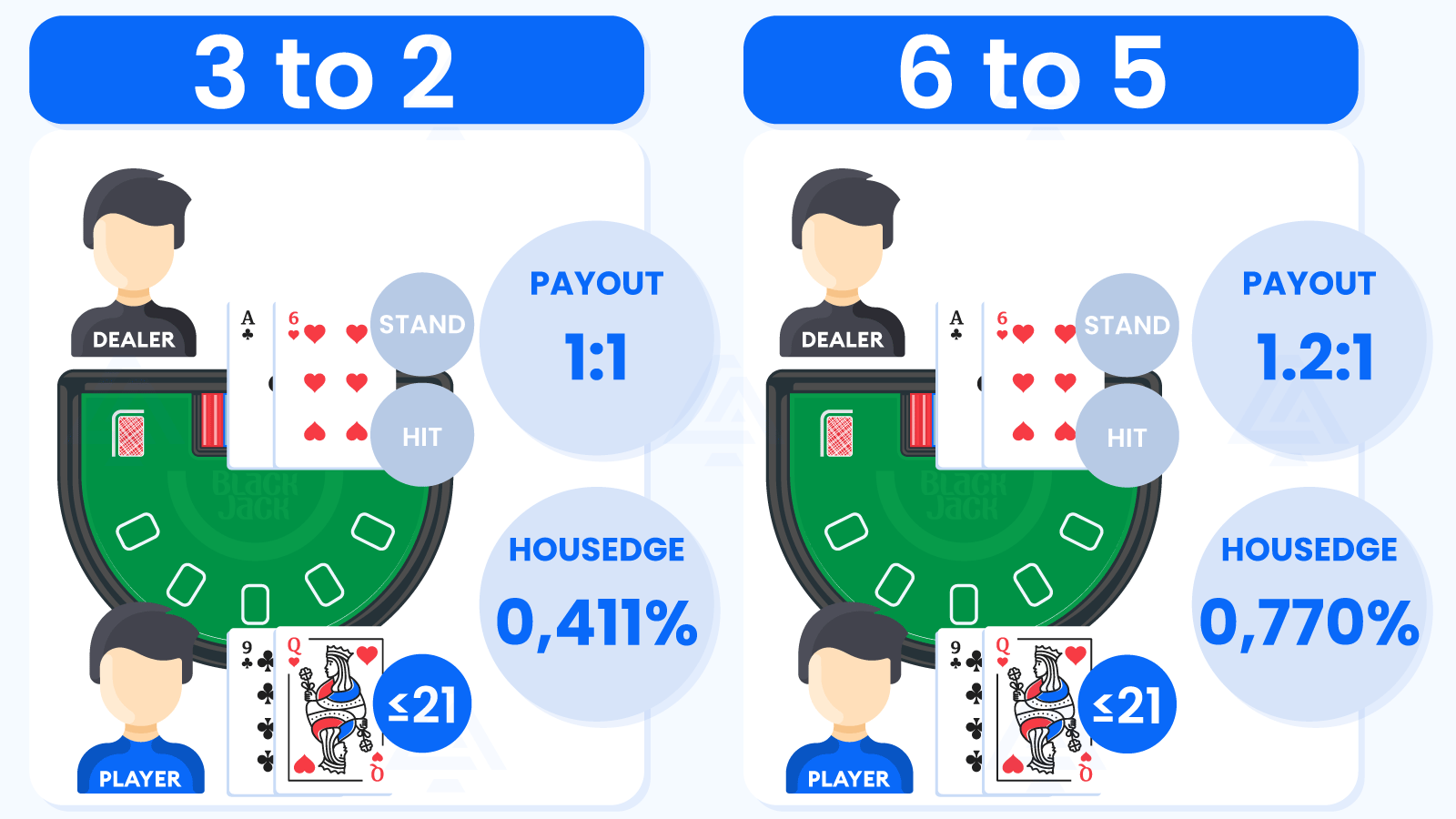
Important
Payouts for Blackjacks are among the most essential rules of Blackjack, together with the conditions for the dealer on hitting or standing on a soft 17.
How 3:2 Blackjack payout odds lower the house edge
Beating the dealer’s hand with cards that sum up to less than the 21 maximum results in a 1:1 payout. This means that the paid amount matches your initial bet. In the less likely event of getting cards that sum up exactly to 21, you get a slightly higher payout. More than informing you regarding the money you receive in this situation, the two rule variations directly play into another theoretical aspect of these table games.
Payout rules affect the house edge
The payout ratio for Blackjacks will influence the theoretical house edge of the game you play. In other words, it will change the average amount the casino is expected to keep from the players in the long run.
3:2 vs 6:5 Blackjack based on house edge
The notion that Blackjack pays 3 to 2 is often considered the standard. It generates a 0.411% house edge. The newer version that starts being favoured by gambling operators, 6:5 Blackjack, increases the house edge up to 1.770% with the same rules.
The rules for the standard version
We have used the following specifications for the rules unrelated to payouts. The game uses eight decks. You can double on any two cards. It has late surrender, allows no resplits, and the dealer stands on soft 17s and peeks for Blackjacks. There is no Charlie bonus.
What it means for your funds
What the house edges indicate is that, in a 3:2 Blackjack game, the casino is expected to keep 0.411% out of your total wagered funds. If you bet a total of £100, the casino will (theoretically) profit by £0.411. In 6:5 Blackjack, the operator will expectedly keep £1.77 from the same sum.
Payout rules influence the house edge independently of others
Regardless of other rules, the rules for Blackjack’s payouts have an independent effect on the house edge. 3:2 Blackjack is considered standard, and thus, the rule adds 0%. The 6:5 rule has a net increase of 1.359% for the house advantage.
House advantage effects range per rule type
| Rule type | Effect range | Best case | Worst case |
|---|---|---|---|
| Number of decks | -0.547% to 0% | One deck | Eight decks |
| Doubling | +0.093% to +0.175% | Double on any 2 cards | Double on hard 10-11 |
| Surrender | -0.558% to +0.077% | Full early surrender | No surrender |
| Resplits | -0.055% to 0% | Resplit up to 4 hands | No resplits |
| Double after split | 0% (standard) | – | – |
| Hit split aces | 0.19% | – | – |
| Resplit aces | -0.125% to -0.105% | – | – |
| Dealer soft 17 | 0% to +0.199% | Dealer stands on s17 | Dealer hits on s17 |
| Dealer peeks | 0% to +0.109% | Dealer peeks for BJ | Dealer does not peek |
| Blackjack’s payouts | -2.268% to +2.268% | Blackjacks pay 2:1 | Blackjacks pay 1:1 |
| Charlie bonus | -0.01% to 0% | 7-card Charlie | No Charlie bonus |
| Can’t split 4s, 5s and 10s | +0.003% | – | – |
Important
- The house edge we present is only relevant when using the basic strategy
- Beyond the basic strategy, applying composition-dependent exceptions lowers the house advantage by 0.002%
How to Effectively Use 3:2 Blackjack Odds in Your Favour
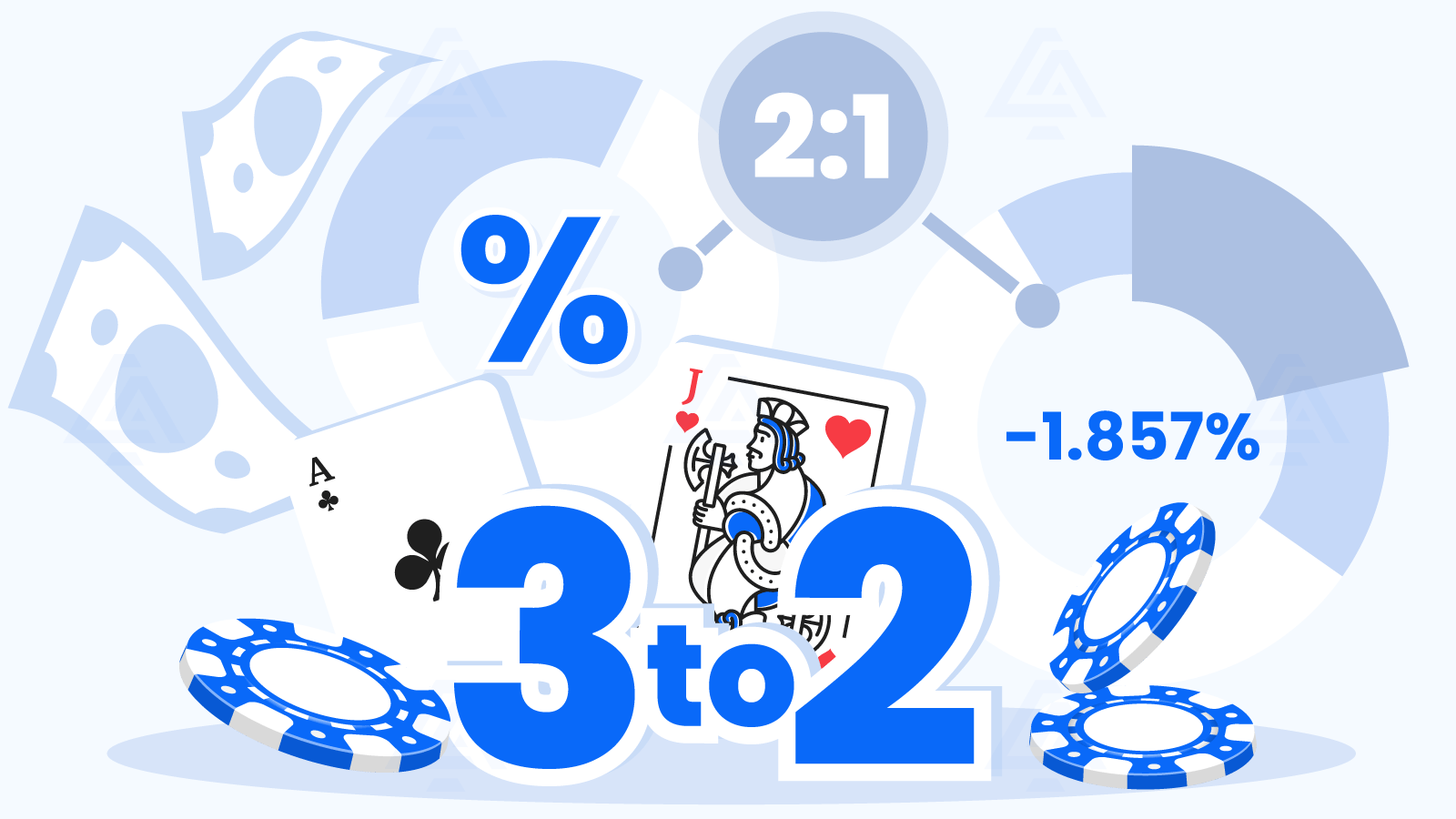
Our Tip
The only better options in matters of payouts are 2:1 payout versions. These game types have a negative house edge of -1.857% with our previously established rules. Thus, you would effectively win money to the detriment of the casino.
Always check for 3:2 Blackjack
Thus, the nature of your table games and their house advantage becomes an additional criterion of choice for your platforms. When covering UK casino bonuses, we stress the fact that table games are often excluded from promotional play. There’s a better scenario where operators allow players to play these games but lower their wagering contribution to less than 100%. This restriction will mean that only a fraction of the total of your wagered money will contribute to the bonus rollover.
Be aware
- Table games frequently have wagering contribution percentages ranging from 10% to 20%
- No deposit bonuses on sign up may exclude these games entirely; read the terms and the specifications we provide before opting-in
Need-to-know
A lower contribution will mean more expenses during turnover. Thus, the funds you can recover by playing become important in the long run.
Why Online Casinos Love 6:5 Blackjack | About the Payouts
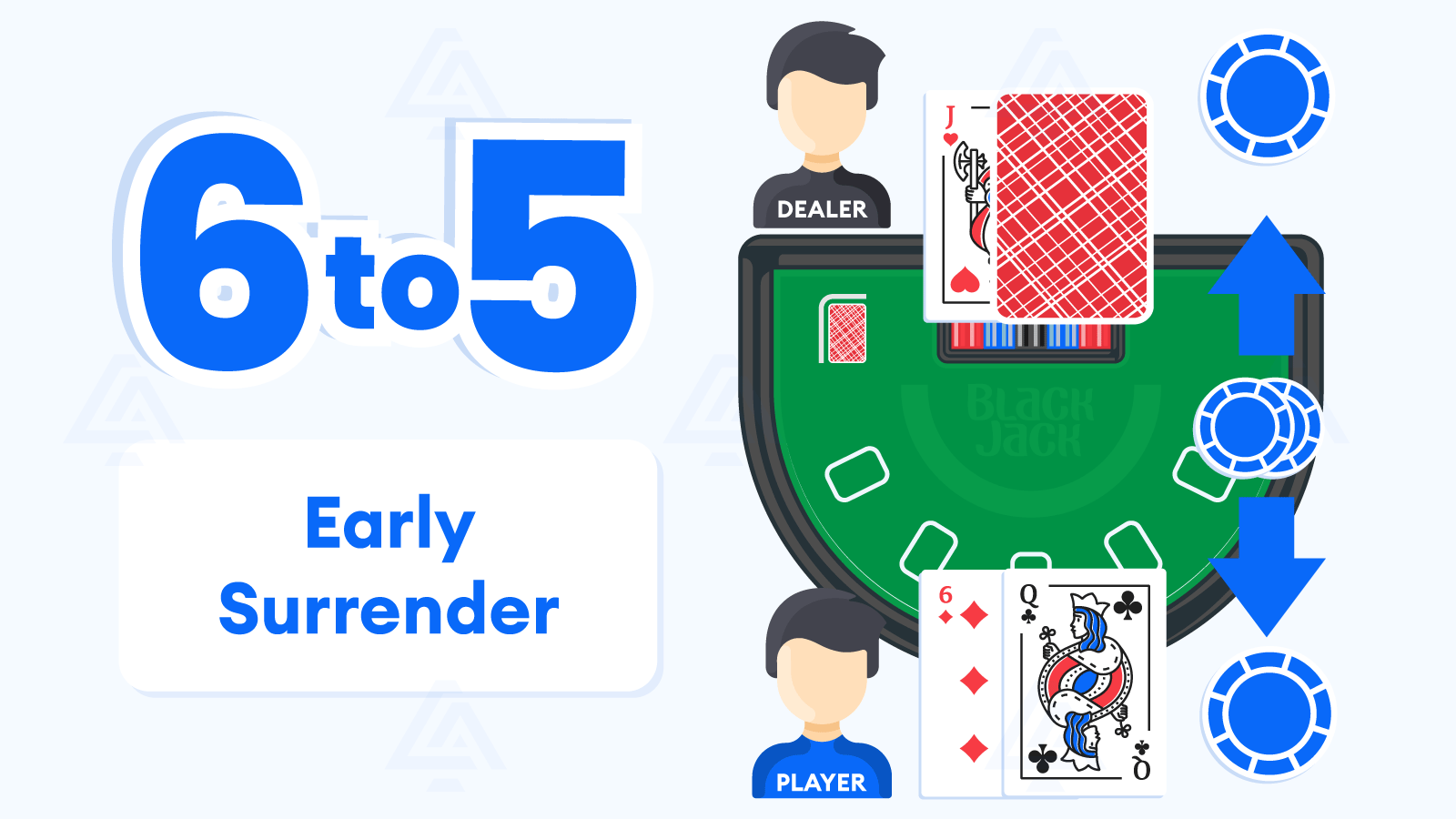
Fact
The payout rule has the most significant effect on Blackjack’s theoretical house advantage. The second most effective rule variation revolves around the Blackjack surrender option. To make a long story short, early surrender for all cards provides the highest decrease in casino advantage.
Another mistake
One common misconception around 6:5 payouts is that they are larger than those from 3:2 Blackjack. This comes from the apparent difference between the numbers expressing the payouts. However, both rules are expressed in the form of ratios. Once you simplify them, you can see how you get fewer funds for Blackjacks.
3:2 vs 6:5 Blackjack payouts simplified
| Alternate expressions | 6:5 | 3:2 | Non-Blackjack win |
|---|---|---|---|
| Simplified ratio | 1.2:1 | 1.5:1 | 1:1 |
| Payouts for £1 | £1.2 | £1.5 | £1 |
| Payouts for £5 | £6 | £7.5 | £5 |
| Payouts for £10 | £12 | £15 | £10 |
| Payouts for £50 | £60 | £75 | £50 |
3:2 vs 6:5 Blackjack payouts by bet size
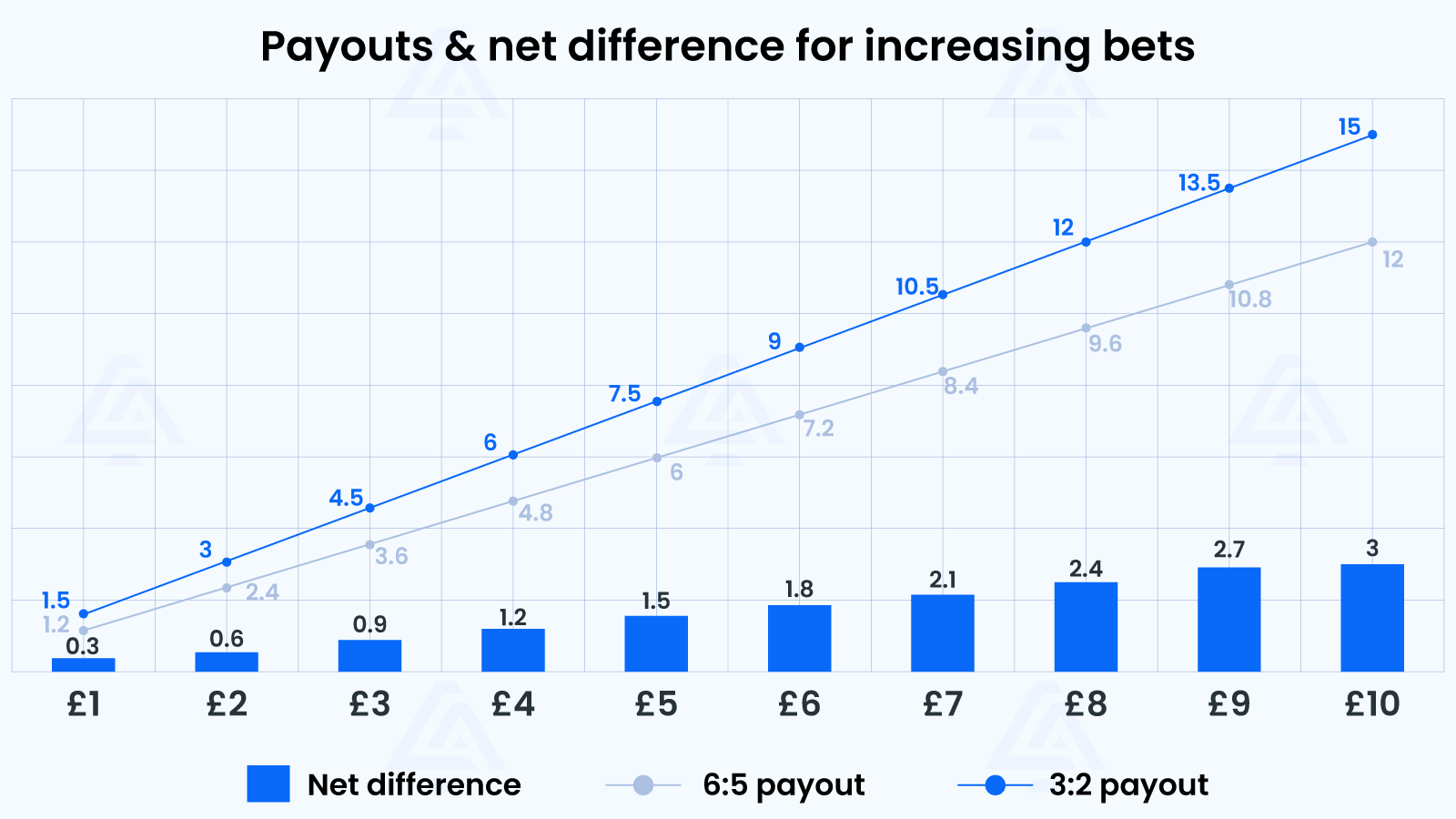
Alpha’s Closing Thoughts – Why 3:2 Blackjack is the Best
There’s a reason they call 3:2 Blackjack “the standard” – it simply provides way better odds and payouts for players. We hope this breakdown of 3:2 vs 6:5 Blackjack has armed you with the knowledge to make the smartest bet. Look for those 3:2 tables, brush up on basic strategies, and watch your bankroll and enjoyment of the game skyrocket.
Avoid 6:5 at all costs – its only purpose is padding casino profits. Blackjack is beatable, but only if you play with the proper rules. Use your new expertise to seek out 3:2 Blackjack and get the upper hand over the house. Just remember – knowledge is power, so use it wisely.
F.A.Q.
What does 3:2 Blackjack mean?
3:2 is a blackjack version that pays you £3 for every £2 you bet when you hit blackjack, meaning a £10 bet will pay out £15. It’s a structure that gives players better value in the long run thanks to its lower house edge of around 0.5%.
Why is 6:5 Blackjack worse for players?
Because it gets you only £6 for every £5 bet when you hit blackjack, which is less than 3:2 that pays you £7.5 for every £5. The casino’s advantage is higher in 6:5 than 3:2, even if by a small margin, but that tiny can set you back lots of money in the long run.
How does the payout ratio affect the house edge?
The payout ratio directly changes how much the casino expects to keep from players over time. A 3:2 payout gives the casino around a 0.4% edge, while 6:5 raises it to nearly 1.8%. That means you lose more per £100 wagered when playing 6:5 tables.
Are there any better blackjack payout types than 3:2?
Yes, 2:1 Blackjack is even better, though it’s rare. It pays £2 for every £1 wagered and actually gives players a small mathematical advantage. However, most casinos don’t offer it because it would cost them money. 3:2 remains the best realistic option for players.
How can I use 3:2 Blackjack odds to my advantage?
Choose 3:2 tables whenever possible, learn basic blackjack strategy, and avoid “insurance” bets that favour the house. Playing smartly under the 3:2 payout keeps losses small and extends your bankroll. Over time, those better odds can make a big difference to your total returns.


